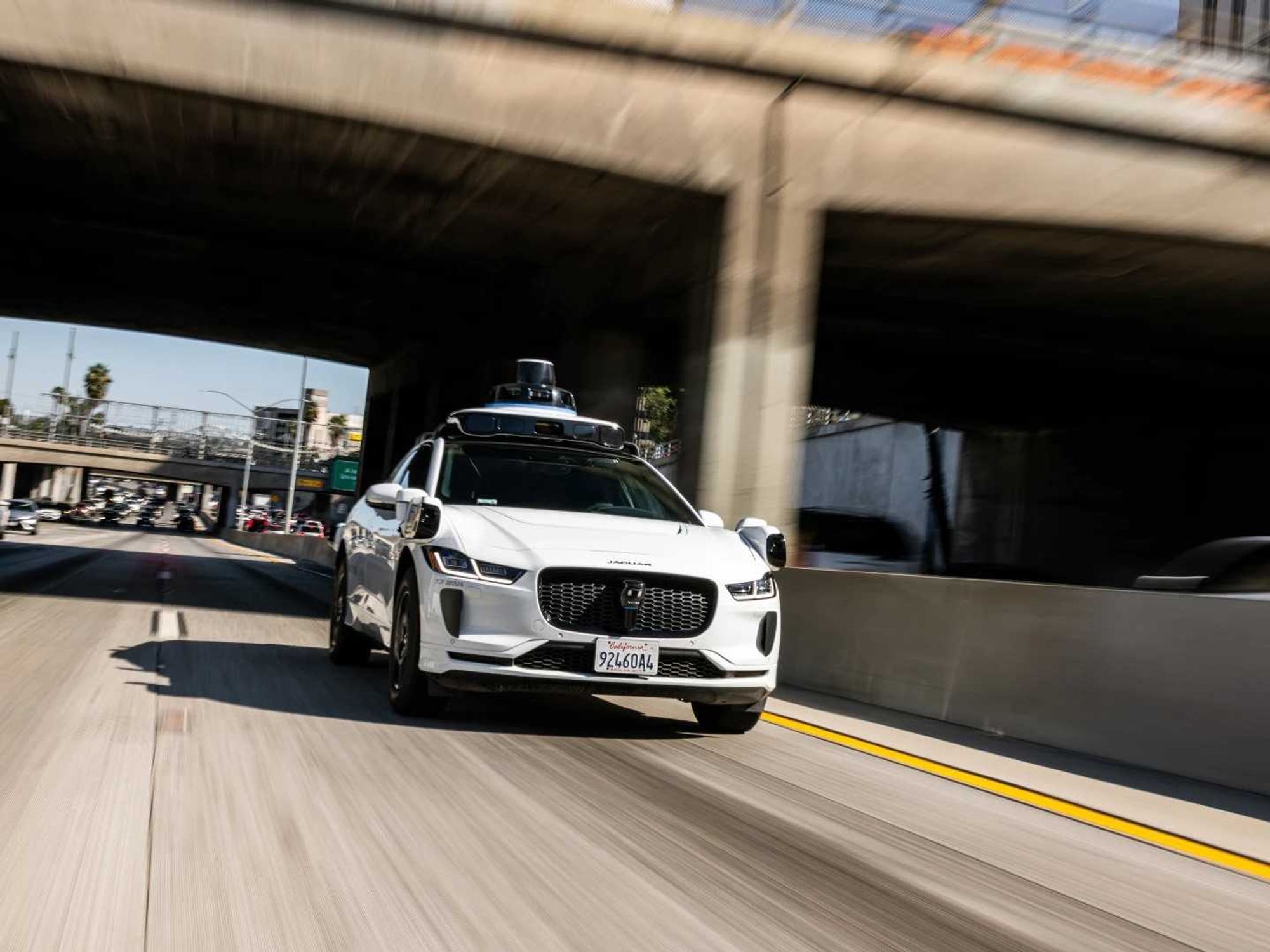‘Try Before You Buy’: Transportation-As-a-Service Startups Are Booming In SoCal
David Shultz reports on clean technology and electric vehicles, among other industries, for dot.LA. His writing has appeared in The Atlantic, Outside, Nautilus and many other publications.

Why buy when you can rent? That’s the question behind a new business model rapidly gaining popularity among transportation companies looking to transition to electric vehicles. The “Transportation as a Service” (Taas) or “Fleet as a Service” (…FlaaS?) solution offers a way for companies to cut carbon emissions from their operations without investing millions into new vehicles and charging infrastructure.
It's a decidedly un-sexy facet of the electric vehicle market, but that’s sort of the whole gambit: A low-risk path into reducing emissions without radically changing day-to-day operations. The general structure of the arrangement goes something like this: A transportation as a service company buys electric vehicles from a manufacturer. It could be a delivery van, a shuttle bus, a Class 8 semi-truck, or whatever else might be in demand. The TaaS company builds the infrastructure to charge, maintain, and store the vehicles while recouping their investment through leases to clients who want to move people or freight on an electrified platform.
For medium-sized transportation companies that can’t afford to invest millions into a new fleet, as well as new chargers and personnel, the arrangement offers a viable path to electrification and achieving environmental, social and governance goals. Not to mention, a way to test the waters before making a larger investment—a way to “try before you buy.” In addition to the environmental benefits, switching to electric also allows transportation companies to access financial incentives like California’s low carbon fuel standard, which pays companies to reduce emissions. For equipment manufacturers, the model provides another buyer and a proving ground for their tech. The TaaS company functions as the middleman and collects money on the leases.
In Southern California there’s a number of companies entering this space from different angles. In Inglewood, Zeem Solutions is operating as a TaaS company with a depot of 77 vehicles ranging from Class 2 and 3 electric vans all the way up to class 7 and 8 tractor trailers. In July, Zeem secured a $50 million capital investment from Affiliates of ArcLight Capital Partners, which CEO Paul Gioupis plans to use to build their fleet to over 100 vehicles by the end of the year. By the end of 2023, he hopes that number will be closer to 400-500.
The plans for growth may seem aggressive, but Gioupis says the demand is astronomical. The limiting factor is supply. Zeem is technology agnostic, meaning the company will use any battery, vehicle, charger or platform as long as there’s demand for it and the engineering meets their standards. Their current crop of offerings come from Lightning Systems, Volvo and Green Power, as well as four partnerships with Southern Californian companies Xos, SEA Electric, Phoenix Motors and Maxwell. This complicates life for the company as a depot since the operators have to learn the specifics of each platform for the purpose of maintenance and repairs. But it also gives Zeem the flexibility to work with any number of manufacturers on the market so they can offer whatever sort of vehicle clients need. So far, Zeem has found a niche in large airport-shuttle-style vans due to their proximity to LAX: 54 of its vehicles currently fit that description. But Gioupis says they’re seeing incredible demand for class 8 big rigs as well.
Class 8 trucks are designed to pull loads in excess of 33,000lbs; doing that with batteries is no small feat. But Los Angeles-based Xos is one of several startups throwing their hat into the ring. The electric truck company also makes a suite of other electric platforms including a delivery “step van” and a class 6/7 that can haul up to 33,000 lbs. Xos doesn’t publicly say exactly how many vehicles they’ve sold, but Head of Strategy Ivan Goldensohn says the number is in the hundreds, 90% of which are step vans. Their biggest clients, by far, are FedEx independent service providers.
Goldensohn takes great pride in the company’s pragmatic and plain approach to electrifying the industry. Xos isn’t concerned with adding autonomous driving as a feature (anymore); it’s not interested in futuristic designs or flashy technology. In fact, other than the lack of a tail pipe or exhaust stack, there’s almost nothing that would indicate to an observer that the vehicles are even electric. “We're focused on building trucks that people use right now,” says Goldensohn. “And what we see from the customers is that they aren't coming to us and saying, ‘Hey, we want a massaging seat with a light show and a projected GPS module on the windscreen or whatever.’ They're saying, ‘Can they be cost competitive? Can they save us on total cost of ownership? And can we use them right now?’”
The Xos partnership with Zeem was a logical one for both parties. This past July, Zeem purchased 10 of the step vans to validate and test the tech. Three have been delivered to date. So far, the experiment is going well and there are plans to expand the partnership, the details of which are still being hashed out. But Gioupis sounds like he believes there might be an opportunity to electrify drayage operations using Xos’ class 8 platform. Drayage—the movement of goods off ships and around ports and onto trains or long-haul tractor trailers—is a key target for electrification. Often referred to as “first-mile” transport, drayage trips are typically short, meaning range isn’t as much of a factor. Charging infrastructure can simply be installed in the port and at destinations. “You're at the same depot, you're at the same location every day,” explains Goldensohn. “It's only one place you have to put infrastructure.” And because drayage trucks spend a considerable amount of time idling, stopping, and accelerating, switching to electric represents a real chance to meaningfully reduce carbon emissions and pollution.
If Zeem’s expansion plans go as intended, the company will compete with yet another Southern California tech startup, WattEV, in the drayage space. Based in El Segundo, WattEV is another TaaS company that’s building charging depots at drayage hubs around southern California with the goal of electrifying first mile transport and adding 12,000 trucks to the road by 2030. Their pilot program is already running in Bakersfield, with plans to expand to three additional sites by mid-2023 and over a hundred locations by 2035.
Zeem’s expansion plans are equally as ambitious, with plans to expand to 50 locations in multiple sites over the next three years. “We're not Hercules over here. We understand what would be required to do something like that,” says Gioupis.
As they expand nationally, Zeem will face competition from companies like Terawatt Infrastructure, the newly minted unicorn based in San Francisco. As well as NextEra Energy in Palm Beach Florida. In terms of funding, Zeem sits solidly in the middle, having raised 65 million to date–a far cry from Terawatt’s billion, but dramatically more than the $500,000 that NextEra has raised. Still, Gioupis doesn’t seem too worried by the funding mismatch. He believes Zeem has a leg up on competitors due to the company’s deep knowledge of the equipment that comes from his past experience working as a private equity investor and an investment banker in the EV sector. “Everybody may know stuff about chargers, or grid, or maybe a little bit of the stuff in between,” he says. “I would argue that there is a lack of knowledge around the equipment. We know the vehicles extremely well. We know all the OEMs extremely well.”
Assuming the supply chain eventually does recover and manufacturers like Xos can deliver more and more trucks, the tides certainly seem to be rising rapidly in the TaaS sector. Even the state of California is adding fuel to the fire: Earlier this month the California Air Resources Board (CARB) announced a $25 million dollar fund dedicated to helping small businesses transition to electric fleets. Dubbed the Innovative Small E-Fleet (ISEF), the fund is available to privately owned trucking companies with fleets smaller than 20 vehicles and making less than $15 million in annual revenue.
“ISEF incentive funding will allow small fleet owner/operators to utilize flexible financing, lease, rental, and truck-as-a-service options, as well as offset infrastructure/charger costs, insurance, and fuel costs,” said CARB in a press release. The initiative is being administered by CALSTART, a national clean transportation nonprofit consortium, and Niki Okuk, Deputy Director, Trucks and Off Road at CALSTART confirmed to dot.LA that both Zeem and WattEV were approved providers eligible to participate in the program. “We're seeing such amazing developments,” says Okuk. “When I started Castro three years ago, there was one electric class eight truck in our catalog. And now there's a half a dozen and every year the ranges are improving. The vehicles that used to be able to serve only the most local duty cycles are able to go further and haul more.”
- California Electric Vehicle Incentives: A Confusing Godsend - dot.LA ›
- Electric Vehicle Startup Vinfast Targets 2023 for Public Offering - dot ... ›
- Xos Secures Multi-Million Dollar Armored EV Deal - dot.LA ›
David Shultz reports on clean technology and electric vehicles, among other industries, for dot.LA. His writing has appeared in The Atlantic, Outside, Nautilus and many other publications.




 Image Source: Perelel
Image Source: Perelel
 Image Source: Valar Atomics
Image Source: Valar Atomics Image Source: Waymo
Image Source: Waymo Image Source: Apple
Image Source: Apple